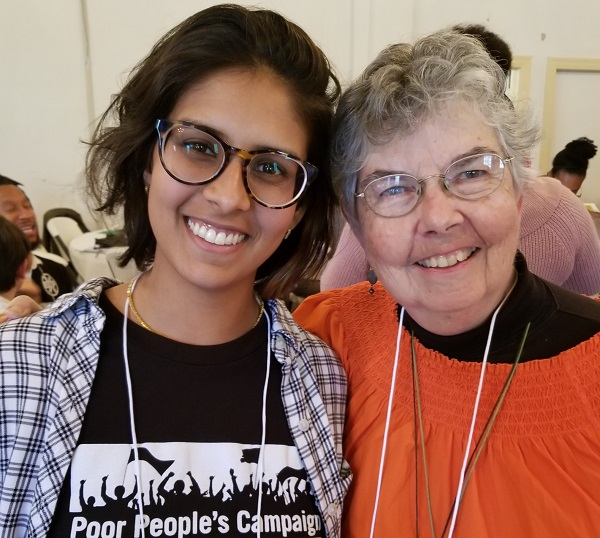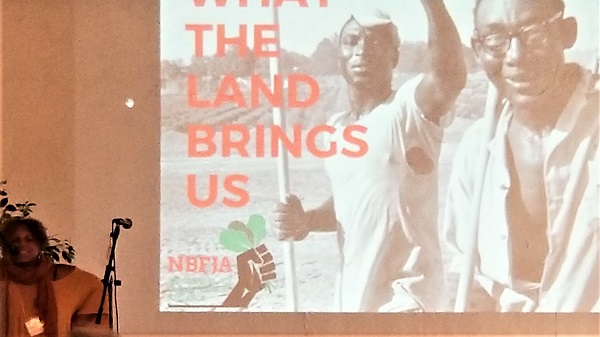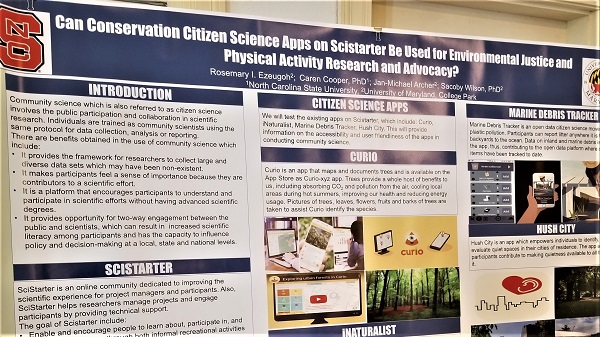A team of Sierrans met recently with fellow North Carolinians to learn how best to draw on community strengths to fight environmental injustice. Members of the Chapter’s Equity, Inclusion and Justice Committee participated in “Reclaiming Our Power,” the 21st annual Environmental Justice Summit, in Whitaker.
The event’s main takeaway lesson was for us to seek changes in how we think about intersectional activism. That includes learning to listen to people within an affected, embattled community to get the clearest picture of their challenge - that they live in a food desert, lack access to medical care, are threatened by toxic coal ash or are being treated as a dumping ground. Then, if we want to help, we must realize that people in the communities already have the power, knowledge and ideas to identify and solve their problems; they seek allies who will actively listen to them, understand their needs and act with them - with the community in the lead - to create concrete, effective actions for change.
 Failing to recognize a community’s existing strength risks creating an imbalanced power dynamic, where we start making the assumption that we know better than the people who live there, ignoring the stories they have to tell and their lived experiences. In doing so, we may end up creating a campaign out of ignorance and good intentions, but one that causes more harm than good.
Failing to recognize a community’s existing strength risks creating an imbalanced power dynamic, where we start making the assumption that we know better than the people who live there, ignoring the stories they have to tell and their lived experiences. In doing so, we may end up creating a campaign out of ignorance and good intentions, but one that causes more harm than good.
The conference, organized by the N.C. Environmental Justice Network, offered an invaluable opportunity for members of different groups to get acquainted with community activists from around the East Coast and explore the possibilities of working together.
The two-day event began with research presentations on a variety of topics, some specific to our state, such as “Who Owns Durham: Housing Stability as Environmental Justice.” Later, agency and legislative leaders discussed the state’s work toward disaster recovery and community resilience, and fielded attendees’ concerned questions about the impact of climate change, the Atlantic Coast Pipeline, and damage to communities of color.
 The event’s second day began with an overview of North Carolina’s major environmental justice issues, such as coal ash contamination, hurricane recovery, pipelines, and factory farms. Discussions centered around how communities can mobilize, use legal and policy-based strategies, change the structure of economic relationships, and educate the media to tell stories in honest and powerful ways.
The event’s second day began with an overview of North Carolina’s major environmental justice issues, such as coal ash contamination, hurricane recovery, pipelines, and factory farms. Discussions centered around how communities can mobilize, use legal and policy-based strategies, change the structure of economic relationships, and educate the media to tell stories in honest and powerful ways.
For example, participants discussed the wood pellet industry and the company Enviva, which makes the biofuel at facilities in North Carolina to ship to overseas customers. Attendees discussed how to shift the media’s perspective from an industry-backed narrative about the fuel’s supposed “green” qualities to a fact-based understanding of its damage to Southern forests; how the industry uses its financial support to woo politicians; and how effective communications will help activate communities on the issue.
 Other sessions addressed:
Other sessions addressed:
- Community-based participatory research such as environmental monitoring, and how it can help further legal compliance and enforcement
- The need for disadvantaged communities and communities of color to retain possession of their land to grow food and for economic and cultural reasons, with a collective social structure
Keynote speaker Ash-Lee Woodard Henderson, executive director of the Highlander Center, challenged conference participants to examine their “utopian” view of what the future should look like, because only then will they present a positive organizing outlook and be able to break out of their individual and organizational identity “silos.”